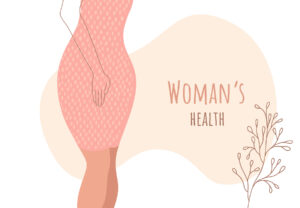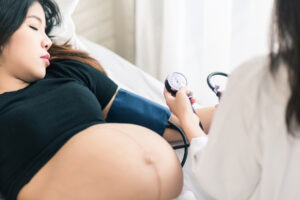By Iris Farrou
11 Mar, 2022
Pregnancy
Best gyns in Buffalo, Best OB practices in Buffalo, Best OBGYN Groups in Buffalo, Buffalo OB-GYN, Buffalo OBGYN, Chouchani MD, Healthy pregnancy, WNY OB-GYN, WNY Ob-gyn doctors, WNY OBGYN, women's health
 Many women utilize In Vitro Fertilization to achieve a healthy pregnancy, and discussions of the IVF process become more and more common. It is the most common form of assisted reproduction technology and has been around for approximately 40 years. It may sound daunting, as it does have a few steps and comes at a price, but what really is In Vitro Fertilization and what should you be looking out for if this is an option you are considering?
Many women utilize In Vitro Fertilization to achieve a healthy pregnancy, and discussions of the IVF process become more and more common. It is the most common form of assisted reproduction technology and has been around for approximately 40 years. It may sound daunting, as it does have a few steps and comes at a price, but what really is In Vitro Fertilization and what should you be looking out for if this is an option you are considering?
What is it?
The original definition means “fertilization in a glass,” where mature eggs are collected from the ovaries and are fertilized by the sperm in an incubator outside the body. Then, the healthiest embryo is transferred into the woman’s uterus. Though your specialist will determine what exactly is the best process for you, there are some standard steps in the IVF process, and a full cycle of IVF commonly takes 3-4 weeks. Sometimes the common steps are split into different parts, in which case the process may take longer.
The Steps
- Ovulation Induction: what marks the beginning of an IVF cycle is the use of artificial hormones to stimulate the production of multiple eggs. Though ovaries produce one egg during ovulation, more eggs are needed during IVF as some may not fertilize or develop normally after fertilization.
- Trigger Injection: before your eggs are ready for retrieval, you need 2-3 weeks of ovarian stimulation. Vaginal ultrasound or blood tests are then done to determine if the eggs are ready. Then, to assist the egg’s final maturation stage and loosening from the follicle wall, you will be given an injection of human chorionic gonadotrophin (hCG).
- Egg Retrieval: 34-36 hours after the injection your specialist will retrieve the matured eggs from your body. You may be lightly sedated during this 20-30 minute procedure and given some pain medication. On the same day, a semen sample will also need to be provided at your doctor’s office.
- Fertilization: this is the exciting part where the semen sample is washed and concentrated, and then added to the eggs approximately 4 hours after egg retrieval. They spend the night in an incubator and are checked the next day for fertilization. Usually, with a normal sperm sample, 60-70% of eggs will fertilize.
- Embryo Transfer: 2-3 days after egg retrieval you will be called back into your doctor’s office for the embryo to be placed in your uterus. The procedure is usually painless, and if this part of the procedure is successful, 6-10 days later you will have an implanted embryo on the lining of your uterus. This is called the Luteal Phase, followed by the Pregnancy Test about 14 days after the Embryo Transfer.
Risks
The most common risk when a woman is undergoing IVF is that there will not be a successful fertilization, or it will not lead to a successful pregnancy. Multiple cycles of IVF are not uncommon, but they can be financially stressful—as they range anywhere from 12k to 17k, according to the New York Times—and sometimes disheartening. Other risks include multiple pregnancies, ectopic pregnancy, miscarriage, premature delivery, and birth defects—among others.
More
 Pelvic organ prolapse is when pelvic organs slip down into—or even protrude out of—the vagina. This happens when there is not enough support for them due to weakened ligaments and pelvic floor muscles. Organs that may be affected are also the bladder, the vagina, and the rectum. As such, pelvic organ prolapse includes uterine prolapse, dropped bladder or cystocele, and rectocele.
Pelvic organ prolapse is when pelvic organs slip down into—or even protrude out of—the vagina. This happens when there is not enough support for them due to weakened ligaments and pelvic floor muscles. Organs that may be affected are also the bladder, the vagina, and the rectum. As such, pelvic organ prolapse includes uterine prolapse, dropped bladder or cystocele, and rectocele.
Who does it affect?
It may sound like a problem for much older women, and it is true: pelvic organ prolapse in its majority affects postmenopausal women and women who may have had more than one vaginal delivery. However, it can happen to women of any age, and it is recorded that pelvic organ prolapse affects 3% of women in the United States. A 2009 study in Obstetrics and Gynecology found that white and Hispanic women are more at risk for pelvic organ prolapse than women of other racial and ethnic groups.
How do I recognize it?
It may be easier to recognize the first symptoms of pelvic organ disorders, which are usually more common, and are accompanied by uterine incontinence or fecal incontinence. Though incontinence on its own does not necessarily mean your pelvic organs have prolapsed, it can generally be a tell-tale sign. Organ prolapse will cause a visible bulge in the vagina, or sometimes you may experience uncomfortable pressure during sex or other physical activities.
The feeling of discomfort or constant pressure in the pelvis is a common symptom, especially if that pressure gets worse as the day goes by. You may also find that you are having trouble inserting tampons or even feeling and seeing something “bulge” out of the vagina.
How is it treated?
Treatments can vary depending on the type of prolapse you have and other factors, but some of them include:
- Pelvic floor muscle therapy to strengthen your pelvic muscles
- Changing eating habits to support a diet that is rich in fiber so as to limit strain during bowel movements
- Pessary: a removable device to support the pelvic organs
- Surgery to support the uterus or the vagina, using your own body tissue or synthetic mess
Research is still underway to find ways to prevent pelvic organ prolapse, but thankfully there are numerous treatment options, and it is never too early to start strengthening your pelvic muscles!
More
By Iris Farrou
11 Feb, 2022
Women's Health
Best gyns in Buffalo, Best OB practices in Buffalo, Best OBGYN Groups in Buffalo, Buffalo OB-GYN, Buffalo OBGYN, Chouchani MD, Healthy pregnancy, Preeclampsia, WNY OB-GYN, WNY Ob-gyn doctors, WNY OBGYN, women's health, women's health tips
 As much joy as a pregnancy brings, there are also a lot of worries that accompany it. While preeclampsia may summon dated references like Lady Sybil’s death on Downton Abbey, it still affects women today. According to the CDC, 1 in 25 pregnancies in the United States are affected by preeclampsia—the sudden elevation of the mother’s blood pressure after the 20th week of pregnancy.
As much joy as a pregnancy brings, there are also a lot of worries that accompany it. While preeclampsia may summon dated references like Lady Sybil’s death on Downton Abbey, it still affects women today. According to the CDC, 1 in 25 pregnancies in the United States are affected by preeclampsia—the sudden elevation of the mother’s blood pressure after the 20th week of pregnancy.
What is it and what are the causes?
Preeclampsia usually begins after the 20th week of pregnancy, with some rare cases of postpartum preeclampsia. It is characterized by high blood pressure, as well as damage to the liver and kidneys. There may also be protein in the women’s urine and low levels of platelets. For a preeclampsia diagnosis, the mother’s blood pressure during pregnancy needs to be persistent and other symptoms of organ damage, low platelets, fluid in the lungs, and/or signs of brain trouble need to be present.
The causes of preeclampsia have not yet been precisely identified. However, potential causes include genetic factors, blood vessel problems, and chronic hypertension, as well as metabolic diseases or autoimmune disorders. There are some known risk factors that may increase the chances of preeclampsia, such as:
- history of preeclampsia in your family
- preeclampsia in a previous pregnancy
- having a multiple pregnancy or becoming pregnant via IVF
- being over the age of 40
- having obesity
- being pregnant for the first time
How Can it be Treated?
To receive a diagnosis and treatment, watch out for the following symptoms:
- signs of kidney problems and excess protein in your urine
- severe headaches and changes in vision
- upper abdominal pain
- nausea or vomiting, as well as shortness of breath
Some symptoms may go unnoticed, such as sudden weight gain and swelling, since they are normal symptoms of a pregnancy, so watch out for a combination of symptoms and attend all your prenatal appointments to ensure you and your baby’s safety.
With preeclampsia, you are at increased risk of seizures, stroke, severe bleeding, and placental abruption. As such, the most effective treatment is delivery. Possible medications may include antihypertensives to help lower your blood pressure, corticosteroids that can temporarily improve liver and platelet function, as well as anticonvulsant medications to prevent seizures. Severe cases of preeclampsia may require you to be hospitalized, but by far the most effective treatment is delivery of the baby. Be wary of the traditional suggestion of “bed rest,” as in this case it can actually be more harmful since it increases the risk of blood clots.
More
By Iris Farrou
21 Dec, 2021
Mental Health
Best gyns in Buffalo, Best OB practices in Buffalo, Best OBGYN Groups in Buffalo, Buffalo OB-GYN, Buffalo OBGYN, Chouchani MD, Healthy holiday tips, holiday stress, WNY OB-GYN, WNY Ob-gyn doctors, WNY OBGYN, women's health

The holidays can be a relaxing and socializing time, but they can also be a time of holiday stress. Experts give us some tips on how to maintain healthy stress levels during this holiday season while keeping COVID safe and being mindful of our body’s health.
COVID Safety
As vaccination rates increase, you can likely choose if you are spending the holidays with vaccinated, COVID-safe individuals. Regardless, you should wash your hands often to prevent the spread of germs. Similarly, you should stay warm and bundled up to not jeopardize your immune system. You may let a little loose during the holidays, but remember smoking causes health risks. Last but not least, monitor children’s activity to see they are keeping safe and having a good time.
Body Health
Holiday living isn’t always friendly to healthy living, especially when it comes to diets and routines.
Here are some easy diet tips to practice this holiday season:
- Find healthy alternatives to your favorite dishes or substitute ingredients with their healthier counterparts. For example, use yogurt instead of mayonnaise, and bake instead of frying.
- Exercise moderation. No need to push your body past its limits when it comes to food and desserts. Keep your portions smaller if you want to extend your mealtime, or if you have several meals planned throughout the day. Avoid foods that upset you.
- Homemade foods instead of processed foods are a better idea. Canned, processed, and premade foods are full of salt and sugar that homemade foods usually don’t have.
- Adding more vegetables to traditional dishes or using vegetable-based recipes as side dishes is an easy way to eat your greens while enjoying holiday meals!
- Taking a walk after mealtimes can help your body digest. Research suggests it is best to take a walk directly after a meal to assist your digestion—and even get some alone time.
Managing Stress
The holiday season can come with heightened stress, or even depression. The demands are higher, financial stress is at play, and with guests around you may not get a moment to yourself. You may also be spending the holidays alone when you would like to have company or have recently lost a loved one.
Here are some tips to handle holiday-related stress:
- Acknowledge your feelings and express them. If you can’t talk to someone, you can write them down. Whether your feelings are positive or negative, it is important to not keep them bottled up.
- Reach out to friends, family, or the community. If you are feeling isolated and lonely or cannot (or don’t want to) reach out to friends and family, community events during the holiday season are an easy way to get some low-stakes socialization. Plenty of community programs organize more events around the holidays, and volunteering or participating is easy.
- Plan ahead and keep your habits, as sticking to a routine or a schedule you are familiar with can help minimize stress. Take agency over holiday plans and keep your limits.
Overall, remember to prioritize the things that make you happy! Avoiding over committing to events that cause stress or are more of an obligation. Spend the time with the people you love doing things you enjoy.
More
By Iris Farrou
05 Dec, 2021
Women's Health
Best gyns in Buffalo, Best OB practices in Buffalo, Best OBGYN Groups in Buffalo, Buffalo OBGYN, Chouchani MD, endometriosis, WNY OB-GYN, WNY Ob-gyn doctors, WNY OBGYN, women's health

If you have been diagnosed with endometriosis or may suspect you are included in the percentage of the female population that has it, you may be concerned about your fertility levels and/or conceiving and carrying to term. Endometriosis is very common and affects between 6% and 10% of the general female population. About 30%-50% of women with it are infertile, and about 25%-50% of infertile women have endometriosis.
Here are some options to consider if you are diagnosed with endometriosis and are interested in becoming pregnant:
Expert Assistance
It is possible that some surgical operations associated with the diagnosis and treatment of endometriosis may affect your ability to become pregnant, so if you haven’t yet undergone any surgical procedures, it would be a good idea to discuss the risks with your doctor. You may also want to consider working with a fertility specialist who will help you find out the contributing factors to your infertility and determine the severity of your disorder.
Improving your Chances
There is no current evidence that suggests medication can assist you in getting pregnant if you live with endometriosis. However, your doctor may instruct you to take progestins so you can increase the level of pregnancy hormones in your body. Another suggestion is to follow a healthy lifestyle so you can decrease the chances of inflammation in your body and help your baby thrive throughout a healthy pregnancy:
- Maintain weight that is healthy for your body type.
- Engage in moderate exercise in your daily life.
- Consume nutrient-dense foods.
Treatments
- Fertility medications are fairly common for women with endometriosis. These can range from progestin injections to fertility medications like Clophemene to help you produce 2-3 mature eggs.
- You may also undergo regular ultrasounds to determine the maturity of your eggs. At the appropriate time, your doctor can insert collected sperm to assist in conceiving.
- In vitro fertilization is also an option couples go for, whereby the egg is fertilized outside the body and then inserted into the uterus.
- If you have mild endometriosis, or your endometriosis has not affected your fallopian tubes, you may consider intrauterine insemination.
- A more costly option, and usually not covered by insurance, is to freeze your eggs. Endometriosis can affect your ovarian reserve, so this option helps if you want to try and become pregnant at a later time.
The good news is that many women living with endometriosis have managed to get pregnant using IVF, especially in cases of moderate or mild endometriosis. Though the chances are about 50% less than those of couples who use IVF due to other infertility reasons, many women with endometriosis are able to conceive and deliver a healthy baby. It is recommended that you start discussing your fertility options with your doctor even before you are thinking of getting pregnant.
Learn more about IVF: https://wny-obgyn.com/2022/03/ivf-step-by-step/
More
By Iris Farrou
30 Nov, 2021
Breastfeeding support
Benefits of breastfeeding, Best gyns in Buffalo, Best OB practices in Buffalo, Best OBGYN Groups in Buffalo, Buffalo OB-GYN, Buffalo OBGYN, Chouchani MD, WNY OB-GYN, WNY Ob-gyn doctors, WNY OBGYN, women's health
 The debate on whether breastfeeding or formula is better for a newborn baby may be alive and well, but the reality is that many mothers do choose to breastfeed. If you are thinking of breastfeeding your newborn or are already doing so, here is some advice on breast care and how to also take care of yourself in the process.
The debate on whether breastfeeding or formula is better for a newborn baby may be alive and well, but the reality is that many mothers do choose to breastfeed. If you are thinking of breastfeeding your newborn or are already doing so, here is some advice on breast care and how to also take care of yourself in the process.
Nutrition
While breastfeeding your baby proper precautions, nutrition, and attention to your body can enrich the experience of motherhood. Remember that nutrients travel through breastmilk into your baby’s body, so it is important to be aware of what you consume. Food, alcohol, and substance intake are often one of the first concerns all mothers have. You may be concerned about eating more food but consuming an extra 330 to 400 for nutrient-rich calories per day actually helps you have more energy and increases milk production.
You want to avoid alcohol, caffeine, and fish. Instead, try to focus on a protein-rich diet sourced from lean meat, vegetables, beans, fruits, vegetables, and whole grains. Eating iron as well as vitamin and calcium-dense foods ensures both you and your baby’s health. Vitamins play a key role in making sure proper nutrition thrives. If you are considering taking diet supplements or multivitamins, it is best to consult your health care provider beforehand.
If you follow a vegetarian diet, the same rules apply. Eat calcium, protein, and iron-dense foods. Try to opt for foods like plant protein, leafy greens, raisins, lentils, and whole grains. Quinoa is an excellent choice because it’s one of the only vegetarian complete proteins, meaning it has all nine essential amino acids that our bodies cannot self-produce.
Hydration
Consciously monitoring your hydration intake is as important as diet. When breast milk fluids are leaving your body, more fluid needs to go back in. Monitoring your urine color, smell and frequency are natural cues to know when to consume more healthy beverages; if something feels out of the ordinary, you need to change your fluid intake. Choose water over sugar-laden beverages and avoid caffeinated drinks. Caffeine can cause your baby to be agitated, and too much sugar can cause postpartum weight gain.
Breast Care
While breastfeeding, you also want to make sure you are allowing yourself to properly care for your nipples. An easy way to do that is by allowing some breast milk to dry on them. Breast milk has natural skin softening abilities and antibodies. If your doctor says it’s safe, take acetaminophen thirty minutes before breastfeeding to help relieve some of the pain. Start feeding your baby on the side of your breast that is less tender. Also, alternate sides and your baby’s position with each feeding. Let your nipples air-dry whenever possible and use hypoallergenic topical ointments to prevent dryness.
You can also apply cold compresses after feeding, and also provide your breasts with plenty of support. Cotton breastfeeding bras with non-elastic straps are a great option. If needed, wear a bra at night for additional support. Avoid washing your nipples with soap as it can dry them out more, or avoid using all-purpose lotions, creams, and bras with plastic lining. 
If you have symptoms that persist, such as increasing redness, puss, intense tenderness, or a fever over 101°F contact your doctor or health care provider.
More
By Iris Farrou
20 Nov, 2021
Prevention
Best gyns in Buffalo, Best OB practices in Buffalo, Best OBGYN Groups in Buffalo, Buffalo OB-GYN, Buffalo OBGYN, Chouchani MD, WNY OB-GYN, WNY Ob-gyn doctors, WNY OBGYN, women's health
 If you have had women in your family with ovarian cancer, you may very well be concerned that it’s something hereditary. Genetic testing is available for ovarian cancer, though the CDC notes that most types of ovarian cancer are not caused by inherited mutations, so genetic testing may not help most women. However, genetic counseling can help determine whether you and your family are likely to have a mutation that should get tested.
If you have had women in your family with ovarian cancer, you may very well be concerned that it’s something hereditary. Genetic testing is available for ovarian cancer, though the CDC notes that most types of ovarian cancer are not caused by inherited mutations, so genetic testing may not help most women. However, genetic counseling can help determine whether you and your family are likely to have a mutation that should get tested.
The following scenarios are of higher risk:
- If you’ve had a significant family history ovarian cancer
- In case of moderate family history of ovarian cancer and are of Ashkenazi Jewish or Eastern European ancestry
- If you have personal history of breast cancer and meet criteria related to age of diagnosis, type of cancer, presence of other cancers, cancer in both breasts, ancestry, and family health history
- Having a personal history of ovarian, fallopian tube, or primary peritoneal cancer
- Carrying a known BRCA1, BRCA2, or other inherited mutation in your family
What are the BRCA Genes?
The breast cancer 1 (BRCA1) and breast cancer 2 (BRCA2) genes are the genes most commonly affected in hereditary breast and ovarian cancer. Those genes are meant to protect you from getting certain cancers, but mutations may prevent them from working properly. If you inherit one of these mutations, you are more likely to get breast, ovarian, and other cancers.
How does genetic testing work?
The BRCA gene test is a blood test that uses DNA analysis to identify harmful mutations in either one of the two breast cancer susceptibility genes. You could also do a multigene panel, which looks for mutations in several genes simultaneously. If there is someone in the family who has had breast, ovarian, or other BRCA-related cancer, they should be the first to get tested. If that is not possible, then an unaffected person can get the test done. Keep in mind that in this case the results may not be as helpful.
What do the results mean?
Positive: this you have a mutation in either BRCA1 or BRCA2, so you are at a much higher risk of developing breast cancer or ovarian cancer. Someone who doesn’t have the mutation is at a much lower risk. However, a positive result is NOT a guarantee that you will develop cancer. Rather, it cautions you to get tested more frequently and to consider procedures and medications to minimize your cancer risk.
Negative: it means a BRCA gene mutation was found but assessing your cancer risk is still difficult. The test result is a “true negative” only if it finds that you don’t have a specific BRCA mutation that’s already been found in a relative. Unfortunately, even with a negative result you still have the same risk of cancer as the general population.
There is also the possibility of getting an uncertain result, which means a mutation in one of the genes was found, but whether that specific mutation causes cancer is undetermined. Researchers continue to develop medical practices to prevent cancer and treat patients successfully, and within the means of science it is definitely advised to do what you can to keep yourself and your family safe, as well as take precautions.
More
By Iris Farrou
10 Nov, 2021
Menstruation
Best gyns in Buffalo, Best OB practices in Buffalo, Best OBGYN Groups in Buffalo, Buffalo OB-GYN, Buffalo OBGYN, Chouchani MD, WNY OB-GYN, WNY Ob-gyn doctors, WNY OBGYN, women's health
 The monthly phenomenon of menstruation is a reality for many women: legs and breasts get swollen, cramps arrive, and the uterine lining does its monthly job. Though in our adult years we are more or less prepared for this arrival, there was a time when we were expecting our periods like a rite of passage into womanhood. The time for the Very First Period! It may have been years since yours, but you also may have a young teen in your life who is now where you once were, waiting for her first menstrual cycle to make its appearance.
The monthly phenomenon of menstruation is a reality for many women: legs and breasts get swollen, cramps arrive, and the uterine lining does its monthly job. Though in our adult years we are more or less prepared for this arrival, there was a time when we were expecting our periods like a rite of passage into womanhood. The time for the Very First Period! It may have been years since yours, but you also may have a young teen in your life who is now where you once were, waiting for her first menstrual cycle to make its appearance.
How can you be prepared to have a first period conversation?
Whether it is your daughter, niece, younger sister, a cousin, or a younger friend, you can share some simple facts with the young woman in your life who may have questions about her menstrual cycle. Most people start their periods around the age of 12, but a little earlier or later is not unusual. With puberty, our bodies start becoming capable of reproduction: first the breasts start developing, and a few years later menstruation begins.
Your period may knock on your door without any warming, or you may experience pre-menstrual syndrome (the infamous PMS). Some common symptoms include acne, breast swelling and soreness, abdominal bloating, back pain, and clear or vaginal discharge. You may also find yourself feeling more tired than usual, as well as more irritable or emotional. Constipation and diarrhea are also not uncommon.
When it’s Time
It’s always good to be prepared and awaiting the arrival of your period is no exception. Many people carry a period kit in their bags, which can include clean underwear, a pad or a tampon, wipes, and pain relievers. If you have that with you, great! But sometimes we’re not prepared… worry not, female ingenuity goes a long way—you can make a pad out of toilet paper! Take at least ten pieces of TP and fold them one over another to form a rectangular. Place this in the middle part of your underwear and wrap some TP around it on the opposite direction, tucking in the end of it on the rectangular piece to hold it in place. Though far from perfect, this is still a way to protect your clothing and feel a little more comfortable.
What about the Pains?
Period cramps happen because the uterine lining has prepared itself for a fertilized egg, but hasn’t received any, so it’s now thickened and discharging itself. You can help alleviate the pains by taking some ibuprofen or naproxen. If you have any allergic reactions to medications, be careful which one you choose! You can also use a warm pad on your belly or take a hot shower. Many women find it helpful to walk around some or consume more water than usual.
It may be super daunting at first but remember that the more you learn your body’s symptoms as time goes by, the more prepared you will be and the easier it will get. And if you’re reading this to give advice to a younger menstrual sufferer, remember that your personal experience goes a long way!
More
By Iris Farrou
30 Oct, 2021
Pregnancy
Best gyns in Buffalo, Best OB practices in Buffalo, Best OBGYN Groups in Buffalo, Buffalo OB-GYN, Buffalo OBGYN, Chouchani MD, Healthy pregnancy, WNY OB-GYN, WNY Ob-gyn doctors, WNY OBGYN, women's health

Even though many high school teachers had teenagers convinced they could get pregnant simply by having sex (and there’s definitely merit to that), in adulthood things can get a little more complicated. If you and your partner are trying to get pregnant through natural insemination, there are a few factors you may want to take into consideration in order to increase your chances of conceiving.
First Things First would be to become familiar with your cycle so you can determine whether it is a regular one (every 28 days) or an irregular one (shorter or longer). That will also help you find out when you may be ovulating. You can use apps to help you track your cycle, as well as your symptoms on the days leading up to menstruation and after. You can also notice symptoms such as an increase in body temperature and more vaginal secretions on the days leading up to your ovulation.
Knowing when you ovulate means you can determine your most fertile days each month. On a regular cycle, this would be 2 weeks before you get your period. It can be a little more difficult to predict that on an irregular cycle, but it is usually 12-16 days before you menstruate. You can better determine this with the help of home ovulation prediction kits, which test urine for luteinizing hormone, a substance whose levels increase each month during ovulation.
The short fertility window spans 5 days before ovulation begins and the 1st day of it, and that’s when the chances of conceiving are even higher. Many couples wonder if it would be best to have sex every day during that window, and the short answer is: yes! The highest rates of pregnancy occur in coupled who have sex regularly, and near or on the time of ovulation.
Knowing the medical information about your body is definitely helpful, as is learning to recognize where your cycle is and being in tune with it. If you have an IUD, tied tubes, or feel that you need assistance in planning a pregnancy, you can always consult an expert and be in touch with your doctor. However, you may also want to take into consideration some of the following factors that contribute to conceiving:
- Maintaining a healthy weight can help, as excess body fat has been found to produce more estrogen, which can interfere with ovulation. Underweight women can also suffer from irregular periods or could also stop ovulating.
- Eating healthy foods that contribute to preparing a woman’s body for pregnancy by providing adequate calcium, protein and iron, and folic acid. Try to avoid foods that are high in mercury, as it has been found to enter women’s bloodstream and has been linked to negatively affecting a baby’s development.
- Cutting down on alcohol and smoking are very important factors in not only maintaining your general health, but also ensuring your body is a healthy home for a fetus.
Keep in mind that stress can be a huge factor when trying to conceive. Lots of couples face heightened stress and anxiety once they embark on the journey of getting pregnant, which can lead not only to intimacy issues, but also affect a woman’s cycle and throw it all off-balance. Remember this may not be an easy process and being supportive of each other as well as seeking help when needed are key to remaining healthy.
More
By Iris Farrou
19 Oct, 2021
Breast health, Prevention
Best gyns in Buffalo, Best OB practices in Buffalo, Best OBGYN Groups in Buffalo, Buffalo OBGYN, Chouchani MD, WNY OB-GYN, WNY Ob-gyn doctors, WNY OBGYN, women's health, women's health tips
 Along with the abundance of pumpkin spiced lattes and corn mazes around the country, October is also the month that brings us a lot of pink in honor of Breast Cancer Awareness. Approximately 1 in 8 women in the U.S. are afflicted, and more than 2 million women were diagnosed with breast cancer in 2020. Chances are, you already know someone who has been affected by this type of cancer. Though educating yourself on prevention and self-care techniques when it comes to it is of high importance, there are also some ways in which you can join the global effort for awareness.
Along with the abundance of pumpkin spiced lattes and corn mazes around the country, October is also the month that brings us a lot of pink in honor of Breast Cancer Awareness. Approximately 1 in 8 women in the U.S. are afflicted, and more than 2 million women were diagnosed with breast cancer in 2020. Chances are, you already know someone who has been affected by this type of cancer. Though educating yourself on prevention and self-care techniques when it comes to it is of high importance, there are also some ways in which you can join the global effort for awareness.
How can I become involved?
- The pink ribbon is the international symbol for breast cancer, and pink has been associated with promoting awareness of it, as well as the efforts made to support women suffering from breast cancer. Wearing pink or adorning your outfit with a pink ribbon is an easy way to showcase support!
- Volunteering locally or nationally is also a good option, and the American Cancer Society (ACS) runs many programs that you can join: Relay for Life, Road to Recovery, and Making Strides Against Breast Cancer are some of them. You can also join one of the many Komen Race for the Cure events nationwide for another fundraising opportunity.
- Share facts and statistics whenever possible. You can do that in social conversations if the subject is brought up, in support of breast cancer survivors, with your coworkers, or with your kids as well if they are old enough to understand.
What are some basic facts I can share?
The National Breast Cancer Foundation and the American Cancer Society are great resources to learn more about breast cancer, access the latest news and statistics, and keep up with the latest scientific discoveries around it. These resources can back up the following US-specific facts:
- Apart from skin cancers, breast cancer is the most common among women
- 1 out of 8 women will receive a breast cancer diagnosis in her lifetime
- Every 2 minutes on average a woman in diagnosed with breast cancer
- There are over 3.8 billion breast cancer survivors
- 63% of breast cancer cases are diagnosed at a localized stage, for which the 5-year survival rate is 99%
How can I lower my risk?
Though there is no sure way to prevent breast cancer and some of the factors may be outside of your control, such as being born female and growing older, here are some basic actions you can take to lower your risk of breast cancer.
- Get regular mammograms to keep tabs on the health of your breasts. Many clinics offer free mammograms in October, so you can take advantage of this opportunity and urge your friends to do the same. Support them, go with them to the appointment, and lead by example.
- Limit alcohol or avoid it: even low intake of alcohol has been linked to increased chances of getting breast cancer, so try to limit it to 1 alcoholic drink a day.
- Maintain healthy weight: especially after menopause, it is important to maintain a healthy weight by watching your diet and exercising regularly, as weight gain and increased body weight have been linked to increased chances of breast cancer.
More
 Many women utilize In Vitro Fertilization to achieve a healthy pregnancy, and discussions of the IVF process become more and more common. It is the most common form of assisted reproduction technology and has been around for approximately 40 years. It may sound daunting, as it does have a few steps and comes at a price, but what really is In Vitro Fertilization and what should you be looking out for if this is an option you are considering?
Many women utilize In Vitro Fertilization to achieve a healthy pregnancy, and discussions of the IVF process become more and more common. It is the most common form of assisted reproduction technology and has been around for approximately 40 years. It may sound daunting, as it does have a few steps and comes at a price, but what really is In Vitro Fertilization and what should you be looking out for if this is an option you are considering?








